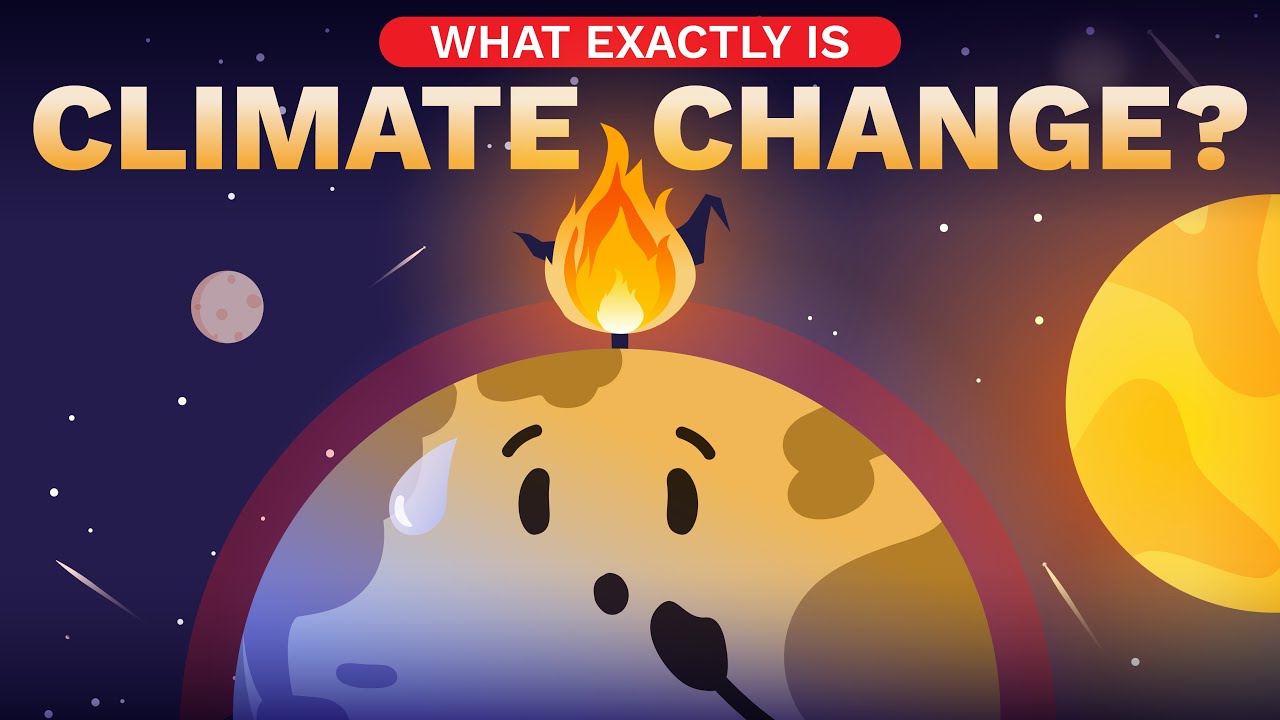Let's Talk Global Warming Episode 2: Carbon Dioxide
Summary
TLDRIn this episode of 'Let's Talk Love War Me', Stevie delves into the crucial role of carbon dioxide in global warming. While often the focus of media, CO2 is only one of many greenhouse gases, yet its long-lasting presence and massive volume of emissions make it a major contributor. The episode explores sources of CO2, from fossil fuel burning and deforestation to industrial processes like cement and steel production. Stevie emphasizes the importance of transitioning to renewable energy and energy efficiency, while highlighting solutions to reduce CO2 emissions and combat climate change.
Takeaways
- 😀 Carbon dioxide (CO₂) is a major greenhouse gas, contributing significantly to global warming due to its long atmospheric lifetime and high concentration.
- 🌍 Human activities, especially the burning of fossil fuels, are the largest source of CO₂ emissions, accounting for 81.6% of U.S. greenhouse gas emissions.
- 🌡️ CO₂ levels in the atmosphere have reached 407 parts per million (ppm) as of 2018, a level not seen in over 3 million years, causing a 2-3°C rise in global temperatures.
- ⏳ CO₂ stays in the atmosphere for centuries, with 40% remaining for 100 years, 20% for 1,000 years, and 10% for 10,000 years, amplifying its long-term impact on the climate.
- 🔥 Fossil fuels, including coal, oil, and natural gas, release massive amounts of CO₂ when burned for electricity, gasoline, and industrial products.
- 🌱 Deforestation contributes to increased CO₂ levels by releasing carbon stored in trees and soil, while also reducing the Earth's ability to absorb CO₂ through photosynthesis.
- 🔋 Renewable energy sources, like wind and solar power, are a key solution to reducing CO₂ emissions as they do not release harmful pollutants or greenhouse gases.
- ⚡ The transition to renewable energy and electric vehicles is happening slowly, and at the current pace, it may not be fast enough to prevent further global warming.
- 🏗️ Industrial processes, such as cement production, steelmaking, and ammonia manufacturing, also contribute significantly to CO₂ emissions, requiring new technologies to mitigate their impact.
- 🌍 The fight against global warming requires collective action, and while the problem is urgent, it is not too late to take meaningful steps to reduce CO₂ emissions and combat climate change.
Q & A
What makes carbon dioxide (CO₂) such a significant greenhouse gas in global warming?
-CO₂ is a significant greenhouse gas because, although it absorbs less heat than other greenhouse gases, it remains in the atmosphere for a long time. Its persistence for up to 10,000 years contributes to the long-term effects of global warming.
How much of the carbon dioxide emitted by human activities remains in the atmosphere over time?
-According to the NRDC, 40% of CO₂ emitted will stay in the atmosphere for 100 years, 20% will remain for 1,000 years, and 10% will last for 10,000 years.
Why is the concentration of carbon dioxide in the atmosphere a concern?
-The concentration of CO₂ in the atmosphere reached levels as high as 407 parts per million (ppm) in 2018, which is higher than at any time in the past 3 million years. This leads to higher global temperatures and rising sea levels.
What is the primary source of carbon dioxide emissions in the United States?
-Fossil fuel combustion is the largest source of CO₂ emissions in the U.S., accounting for nearly three-quarters of all emissions, with coal, oil, and natural gas being the main contributors.
How does deforestation contribute to carbon dioxide emissions?
-Deforestation not only stops trees from absorbing CO₂ through photosynthesis but also releases the stored CO₂ from dead plants and soil into the atmosphere, exacerbating global warming.
What are carbon sinks, and why are they important?
-Carbon sinks are natural systems like forests and soil that store carbon dioxide. They help remove CO₂ from the atmosphere, but their effectiveness is diminished when trees are cut down, releasing stored CO₂ back into the air.
What is the proposed solution to reduce CO₂ emissions from deforestation?
-One solution is to halt deforestation and replant trees in areas that have been cleared. This helps restore carbon sinks, preventing additional CO₂ emissions and increasing CO₂ absorption from the atmosphere.
What role does the cement industry play in carbon dioxide emissions?
-The cement industry contributes about 8% of global CO₂ emissions, primarily due to the calcination process, which releases CO₂ when limestone is heated to produce clinker, a key ingredient in cement.
How can the steel and iron industries reduce their CO₂ emissions?
-By using hydrogen instead of coke in the production of steel and iron, CO₂ emissions can be reduced. However, this requires abundant renewable electricity, as hydrogen production currently depends on fossil fuels.
What is the Haber-Bosch process, and why does it contribute to CO₂ emissions?
-The Haber-Bosch process is used to produce ammonia, primarily for fertilizers. It requires large amounts of hydrogen, which is typically derived from fossil fuels, leading to significant CO₂ emissions.
What solutions are proposed for the ammonia production process to reduce CO₂ emissions?
-To reduce CO₂ emissions, the ammonia production process could shift to using renewable electricity for hydrogen production instead of relying on fossil fuels, but this requires further advancements in renewable energy infrastructure.
What is the importance of transitioning from fossil fuels to renewable energy sources?
-Renewable energy sources like wind and solar power are critical because they do not emit CO₂ or other pollutants, unlike fossil fuels. Transitioning to renewables can significantly reduce the greenhouse gas emissions responsible for climate change.
Outlines

此内容仅限付费用户访问。 请升级后访问。
立即升级Mindmap

此内容仅限付费用户访问。 请升级后访问。
立即升级Keywords

此内容仅限付费用户访问。 请升级后访问。
立即升级Highlights

此内容仅限付费用户访问。 请升级后访问。
立即升级Transcripts

此内容仅限付费用户访问。 请升级后访问。
立即升级浏览更多相关视频

Material on Global Warming Part 2 | Positive and Negative Impacts of Global Warming

Climate Change: How does it really work? | ClimateScience #1

Carbon Dioxide and the Greenhouse Effect

Photosynthesis and Cellular Respiration: Crash Course Botany #5

What is Global Warming? | Climate Change Webseries | Ep. 1

Ciclo do carbono - Brasil Escola
5.0 / 5 (0 votes)
